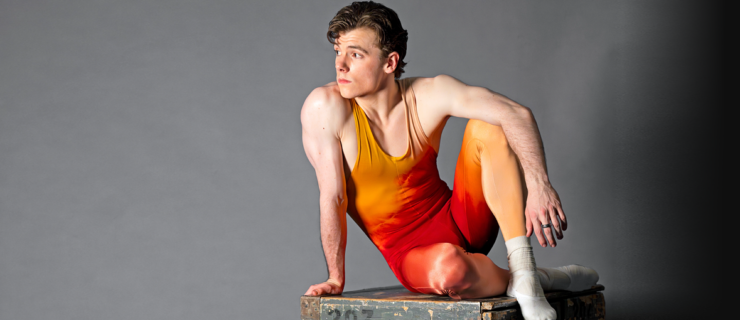Surviving The "Fat Talk": What To Do When You're Confronted About Your Weight
Early in Carrie Imler’s 22-year career with Pacific Northwest Ballet, she was excited to be cast in Balanchine’s The Four Temperaments. But immediately following dress rehearsal, she was removed from her role in “Melancholic.” “My artistic director at the time pulled me aside and said, ‘We can’t put you out there,’ ” she remembers. “My weight fluctuated my entire career. Just when I felt like I had figured it out, I would gain it back and have to start all over again.” Despite becoming one of PNB’s most celebrated principal dancers, Imler never shook the fear of what might happen when a leotard ballet was in the repertoire.
Ballet prides itself on high standards, and the classical ballet physique is not the least of those expectations. Fear of the “fat talk” still lurks in studios, but, as Imler points out, weight is a challenge that many dancers face, while others may struggle with the arches of their feet or turnout. If you are confronted about your weight, know that many talented dancers have been there. Having “the talk” doesn’t mean you can’t become a professional, but if you take a mindful approach to the conversation, it will show your maturity and ultimately your ability to navigate a career.
Has Something Changed?
If your teacher or director has approached you about your weight, you’re likely left feeling emotional, vulnerable and overwhelmed. Once you have a chance to think clearly, ask yourself what factors, like puberty, may be contributing to changes in your body. Nadine Kaslow, resident psychologist at Atlanta Ballet, says, “There is this huge focus on weight and body at a time when even non-dancers are struggling with body issues and everything else that is happening as an adolescent.”
External factors often play a role as well. PNB’s consulting nutritionist, Peggy Swistak, says that she often sees dancers struggle with weight early in the season as they adjust to living on their own and sharing a kitchen with a roommate. “One may have really bad eating habits and doesn’t have to watch her weight at all, and the other is gaining weight. There is a conflict in managing their food together,” she says. Ballet Memphis ballet master Brian McSween adds that financial stress can create barriers for eating nutritiously. “The one-dollar piece of pizza costs a lot less than eating organic,” he says. “You have to make the best choices possible with what you have.” Other changes, like a new schedule, layoffs or even emotional setbacks, will present the need to reevaluate your food habits and exercise routines throughout your career.
If you are confronted with criticism of your weight or physical fitness, Kaslow also suggests that you remind yourself what you do like about your body. “Dancers can all tell you what they don’t like about themselves, but very rarely can they tell you what is good about their body.”
 Imler in one of Balanchine’s famous leotard ballets, “Apollo.” Photo by Angela Sterling, Courtesy Pacific Northwest Ballet.
Imler in one of Balanchine’s famous leotard ballets, “Apollo.” Photo by Angela Sterling, Courtesy Pacific Northwest Ballet.
Having the Conversation
These discussions go best when there is mutual trust between the dancer and artistic staff. “It is important that the dancer understands that whatever I am saying is in their best interest and in the best interest of the organization,” says McSween. As long as the conversation is approached respectfully, listen to what is being said. Then, focus on how you’d like to move forward. “There needs to be an understanding on how to come to an agreement,” says McSween. If you don’t agree with what is being asked of you or you recognize unhealthy advice, you may be in a harmful dance environment.
While you probably feel embarrassed, it’s important to not let those feelings consume you. “Seventy-five percent of my career was spent in a T-shirt,” says Imler. “Whether I was skinny or not, I always felt like I was being judged. Every time I got those talks, I felt like everybody knew what I got called into the office for.” Kaslow says that teachers and administrators need to help break this stigma. “Create forums to discuss feelings about their bodies and the stresses,” she says, “because there are people in the dressing room that are really struggling and hating their bodies.”
Get the Right Guidance
If weight conversations are approached too casually—a quick mention from a teacher, and then not followed up with a plan laid out by professionals—Swistak says you should be concerned. “The dancer loses a little weight and then they just keep going because they get compliments,” she says. The toxic mentality of “some is good and more is better” can lead to eating disorders, like anorexia or bulimia, she warns.
If your teacher or a member of the artistic staff gives you advice about how to address your weight, that’s another red flag. “I shouldn’t offer suggestions on things that I am not an expert on,” says McSween. At Ballet Memphis, dancers are referred to the company’s consulting medical staff to figure out what support is needed. “It’s not just about nutrition,” he adds. “It could be the way you are exercising or many other things.” PNB provides its dancers and students with direct access to both a psychologist and a nutritionist in addition to its physical therapy and medical staff.
Swistak warns that the internet and TV programs are not the place to find advice for managing your weight. “Anyone can say that they are a nutritionist,” she says. “Dr. Oz is out there giving nutrition advice and he is a surgeon.” Fad diets that populate Google searches and ads on social media are unlikely to serve the nutritional needs of an athlete. If your studio or town does not have access to nutritional, psychological or athletic training staff who are well versed in ballet, look for professionals who work with athletes. If they are open to learning more about the unique challenges of dancers, they can become a great resource for you.
It is important to remember that the world of ballet is also evolving—everyone interviewed agreed that there are more and more places for dancers with diverse body types. If you are at an impasse with your director and do not think what they are asking for is safe or possible, there is a better place for you. Imler, who became known for her athletic body, says, “I was lucky to find a company that didn’t need a dancer to be rail-thin and dance the way I did. I was never going to get rid of my butt and my thighs. But I was lucky to have artistic directors that accepted me for who I was.”
Is This Toxic?
If you’ve experienced any of these situations, you may be in an abusive or unsafe environment.
-
You are given a goal weight.
“I don’t talk about weight. I talk about physical conditioning,” says Ballet Memphis ballet master Brian McSween. “There are plenty of dancers that, maybe on the scale by context to the world, are in fantastic shape but lack muscle definition,” he says. Psychologist Nadine Kaslow adds that a weight range (that is more than a few pounds apart) can be helpful, but you should never aspire to an exact number.
-
You are body-shamed or receive harsh comments in front of others.
If a teacher has concerns about your body, they should talk to you privately and help you create an appropriate plan.
-
Your teacher creates competition by comparing dancers’ bodies.
“Dancers can look good in all kinds of bodies,” says Kaslow, who warns of this red flag: “Teachers who say, ‘You don’t look like a dancer,’ as if there is only one.”
-
It’s implied that your weight is connected to how much you love dance.
“The person at the front of the room shouldn’t dictate whether or not you really love what you’re doing,” says McSween. Your relationship to your art should not be determined by an outside source.
Advice for Teachers
-
Create a policy with your staff and enforce it.
At PNB School, teachers are not allowed to discuss weight with students, says nutritionist Peggy Swistak. Instead, concerns are taken to the school administrator or artistic director. The policy protects the student-teacher relationship while allowing teachers to focus on the dancing.
-
Be prepared with resources.
“How are dancers going to find these people on their own?” asks psychologist Nadine Kaslow. “You’re not always going to find someone that was once a dancer and is now a nutritionist or a psychologist, but you can find professionals who are used to working with athletes.”
-
Remind students that they are athletes.
“Dancers need to weigh less than the person on the street that is the same height,” says Swistak, “but they are athletes and have to be healthy.”
-
Break the stigma.
Have group conversations with students about the pressures to be thin. “It helps to have everybody be able to talk about it together,” says Kaslow. “It is about switching the culture.”






